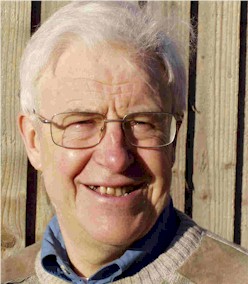
Cycling in
Rural
China
Part 2
Copyright © Michael G. Ormerod, 2005.
Cycling in Rural China: Part 1 | Part 2 | Part 3 | Part 4 | Part 5
From Hot Springs to
Yi-style
Restaurant
Our next stop was at the Tiansheng Bridge Hot Springs. This small resort built alongside a river and around the hot springs is accessed by a long flight of steep steps.
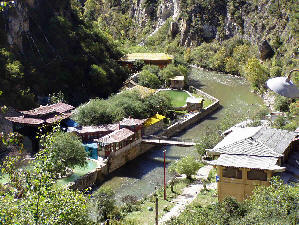
Tiansheng Bridge Hot Springs Resort from the entrance gate
After lunch, we cycled to Bita Lake, a World Heritage site. This was the first time we could observe rural life.

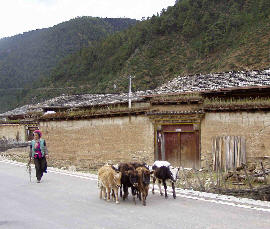
We arrived back in time for a gentle swim in the pool fed by the hot springs. The water temperature was about 30 degrees C.
The following day, cycling became serious. As we crossed four passes, we became conscious of the altitude, in excess of 3000 m (10,000 feet). After the second pass, we dropped down into a small village and stopped for lunch at the Kowloon Yi-style. Restaurant, which was typical of many we visited.
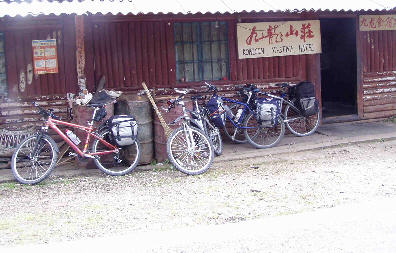
Lunch stop
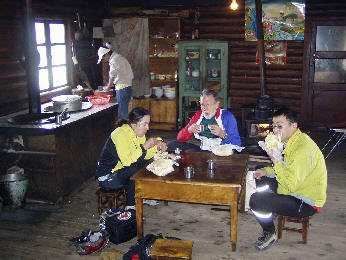
Lunch stop
Limestone (Travertine) Terraces
After lunch we climbed over two more passes to reach Baishuitai, our overnight stop.
The following day, we explored the Baishui terraces on foot. The travertine terraces are formed by limestone precipitating from spring water which is laden with chalk. The site is sacred in the Dongba religion of the Naxi people (a form of Shamanism). They still come here to ask the Gods to bestow wealth and fertility.
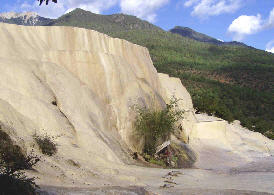
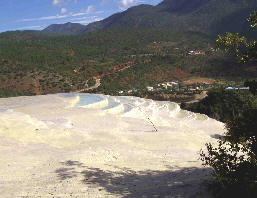
A bouquet of small branches has been placed on the terrace as an offering to the Gods
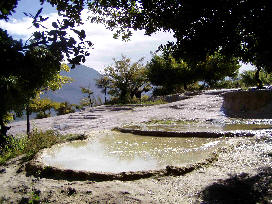

This picture shows some terraces in the early stages of formation

A Dongba shaman at the top of the terraces. He is standing near a small spring where people make offerings
Back on the bicycles we cycled for uphill for 10 miles (16 km) to cross another high pass to drop down to a small village for lunch.
Mountain View Restaurant
We stopped at a typical roadside restaurant. As usual, Danny chose the food which was cooked on a wood burning stove in the same room as the two tables.
As we were leaving, they asked me (through Danny) if I would give the restaurant an English name. I wrote down "Mountain View Restaurant" and Danny translated it into Chinese script. If you are ever in this part of China, let me know if you come across a small restaurant with this name!

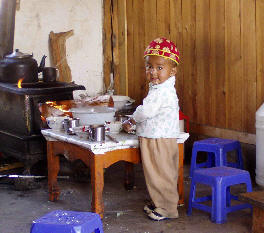
Mother¡¯s little helper
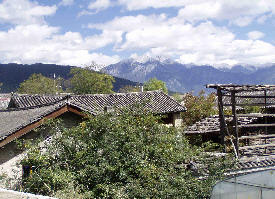
The mountain view from outside the restaurant
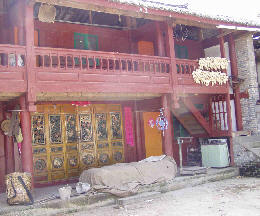
The family house at the rear
Tiger Leaping Gorge
After lunch we climbed for another 12 miles (20 km). The road hugged the side of a mountain giving us magnificent views of the valley below. We then descended a similar distance, sweeping round the hairpin bends. The road through the valley lead into the famous Tiger Leaping Gorge where we had our first sight of the Yangtze River.

Looking into the valley
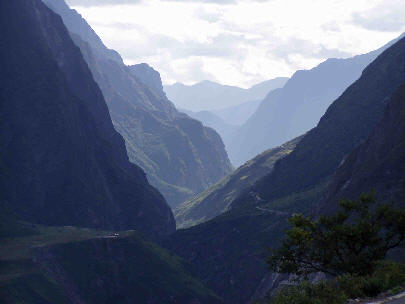
Tiger Leaping Gorge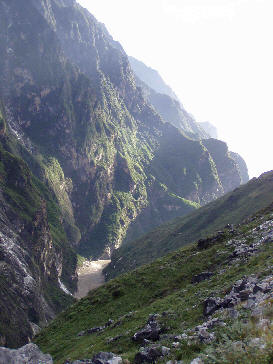
Tiger Leaping Gorge
The road followed one side of the gorge. Part way along, we stopped at a hamlet which contained several guest houses, one of which we stayed in.
Cycling in Rural China: Part 1 | Part 2 | Part 3 | Part 4 | Part 5
Bike China Adventures, Inc.
Home | Guided Bike Tours | Testimonials
| Photos | Bicycle Travelogues
| Products | Info |
Contact Us
Copyright © Bike China Adventures, Inc., 1998-2012. All rights reserved.
